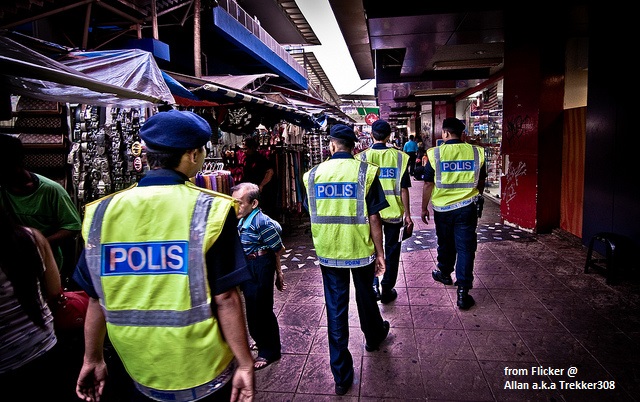What are these weird grey lumps that washed up on Penang’s beach?

- 2.4KShares
- Facebook2.3K
- Twitter11
- Email10
- WhatsApp36
Bizarre things have washed up on beaches before, like fly swatters, severed feet, Doritos, and a giant Lego man. Adding to this list is Malaysia’s own contribution, when thousands of GREY LUMPS washed up to the beach in Tanjung Bungah, Penang recently, puzzling a lot of people at first.
Ranging from the size of bricks to fists to small pebbles, the grey lumpy things have a texture sorta like modelling clay, easily smushed with a finger. They have no odour, only a mild sea smell, and were found only along a 100m stretch of the beach. Somehow we doubt they came from Fergie.

Err, so what daheck are they?! Can you guys take a guess?
Actually, it’s marine clay
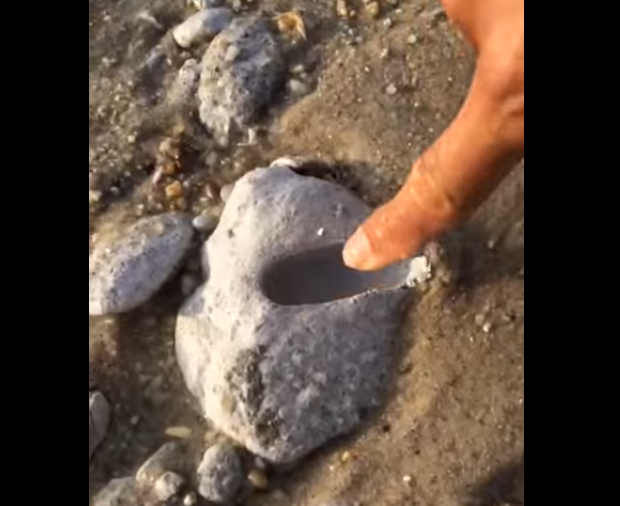

Three videos taken on 28 January by foreign visitor Andrea Briglia, depicted beach-goers alarmed when they saw the grey clay (btw try not to get distracted by the cute Dalmatian in the background). Some people were wondering if the clay, shaped like a certain character in Toy Story, were semi-hardened cement or some type of strangely malleable rocks. Turns out, the lumps have been identified as marine clay.
It is not a new object or strange phenomenon as marine clay is just another type of clay found in coastal regions around the world. They come from layers of marine clay sediment lying in the seabed at depths of 5m to 10m, not far from many shorelines, sometimes containing sand and grit too.
But why did marine clay that is 5 to 10m deep on the seabed appearing on the beach? When reporters contacted Geologist Professor Emeritus Datuk Dr. Ibrahim Komoo from Universiti Kebangsaan Malaysia, he explained:
“These deposits could have been disturbed by nature such as strong waves or dislodged by human activity.” – Prof Ibrahim, The Star

But it’s been said that it is not harmful to the environment la. The presence of thousands of marine clay balls on the beach had angered locals, including civil rights activist Anil Netto, who claimed on his blog that Penang’s extensive LAND RECLAMATION is to blame for spoiling the beaches.
“It is important for the Department of the Environment to find out what is the source of these ‘rocks’ and how it is affecting marine life along the northern coastline of Penang Island.” – Anil Netto on his blog
True, they are not attractive, as far as beach beauty standards go, coz people want fine white sand on their beaches, not lumpy grey gunk. But you will be relieved to know that the marine clay is at least NOT harmful to the marine life, according to Prof Ibrahim, because it is part of the natural environment too. So, the worst harm it could do now is potong people’s stim when they go to the beach.
Incidentally, people have used marine clay to make handmade soaps:
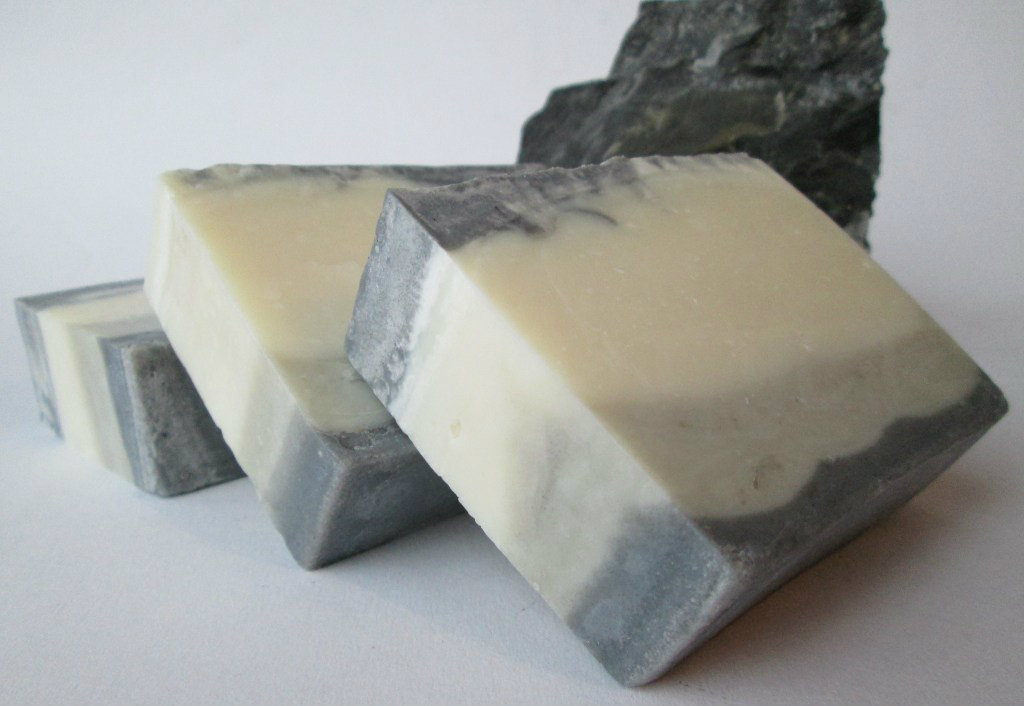
What land reclamation works are going on in Penang? Why are people unhappy?

Land reclamation is the process of creating new land taken from the ocean, riverbeds, or lake beds, usually for the need of human activities. This can be achieved with a number of different methods, the simplest one being filling the area with large amounts of heavy rock and/or cement, then filling it with clay and dirt until the desired height is reached.
So if this gives Penangites more land to live on, why are they not happy with it? Here’s what some residents had to say… Chan Kok Leung, 55, who lives in a condominium near Bayan Indah said if a housing project was to be built on the reclaimed area (named Queens Waterfront), their view of the sea would be blocked entirely. On top of that, residents near Queensbay were against it because they didn’t want traffic woes and congestion.
For one, it could be a quality of life thing, but perhaps these guys are also worried their property’s price would be affected. However, usually with new land for developers to build more property on, prices would drop, enabling more people to be able to afford a house. So it’s pros and cons for different people.
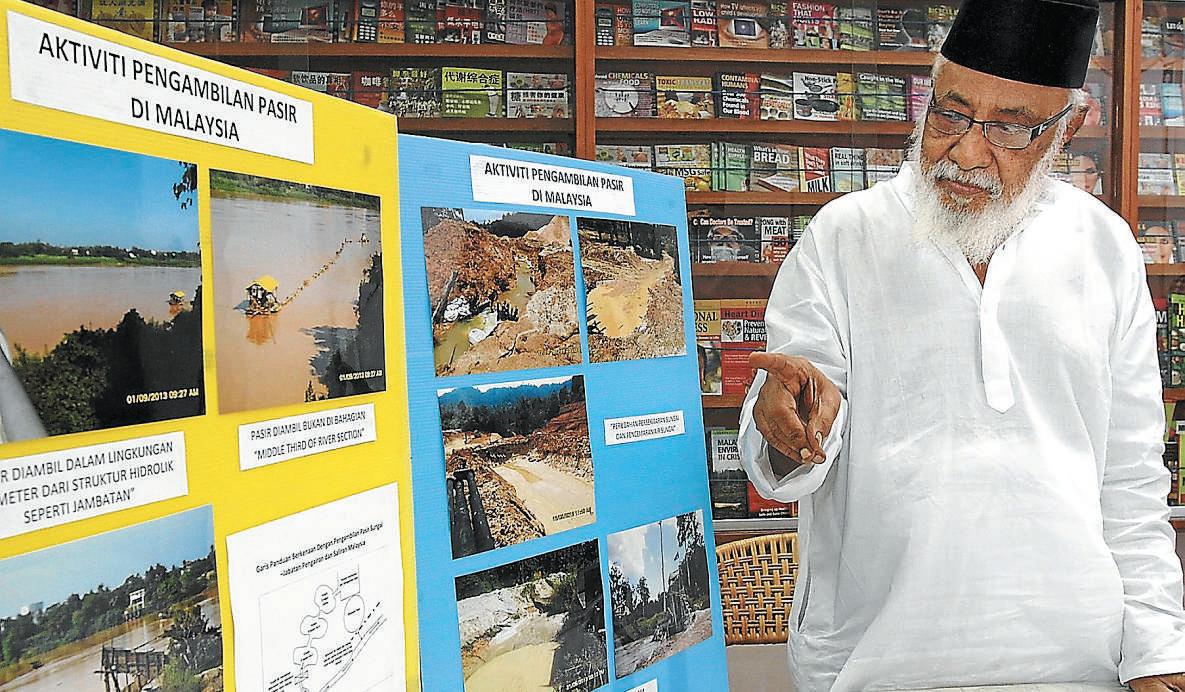
Another resident, Muhamad Idris Sulaiman, 44, questioned if the state had conducted an Environmental Impact Assessment (EIA) before ok-ing the project. NGOs fear that it would affect the environment, marine life in particular. Dr. Zulfigar Yasin, a Universiti Sains Malaysia marine biology professor believes fishermen would lose their fishing grounds. “The impact may not be immediate, but the obvious index is the price of fish. Before, the common folk ate fish, and if you were rich, you ate chicken. These days, it’s the opposite. Everything from the sea is becoming expensive.”
Perhaps the group that stands to lose the most from land reclamation activities are fishermen. 50 of them staged a protest in George Town, claiming to represent 1,000 Penang fishermen, to plead with the state government to halt the project. However, we must mention that the state government gives fishermen compensation.
“There is no need for us to cheer for whatever compensation we will be offered. Ultimately, we will be at the losing end. We will lose our livelihood altogether.” – Nazri Ahmad, Penang Fishermen Association chairman, New Straits Times
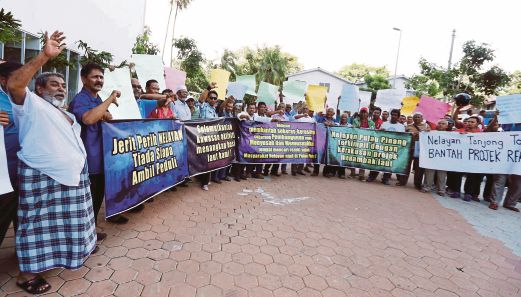
So is land reclamation actually good for Penang or not?
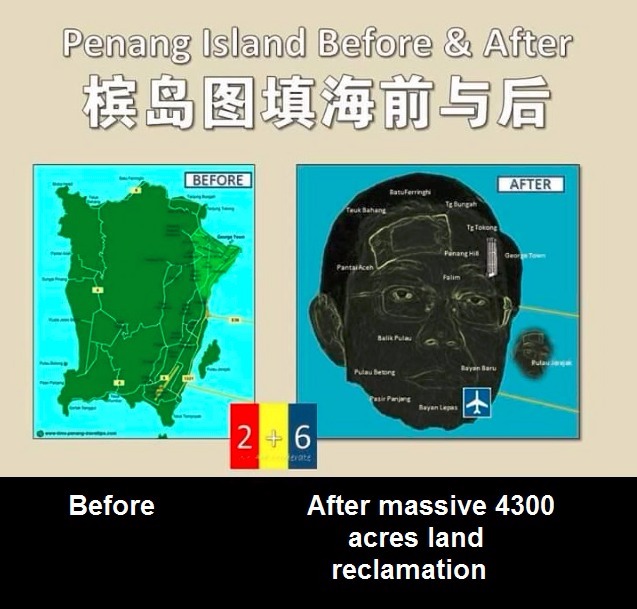
Whether land reclamation is good for Penang or not depends on how you see it. There are pros and cons la. For example, if you were in Chan Kok Leung and Muhamad Idris Sulaiman‘s shoes, living near coastal areas, you would feel the inconvenience of having your sea view being blocked, plus traffic and congestion issues for short while. If you were a fisherman, your livelihood would be threatened.
On the other hand, Penang is running out of space, so reclaimed land is necessary for development. The plan is also to solve the island’s biggest problem – traffic congestion. Under the RM27bil Penang Transport Master Plan (TMP), Chief Minister Lim Guan Eng said land will be reclaimed to make space for a 5-in-1 public transport solution, including LRT or monorail, catamaran or water taxis, buses, taxis and cable cars. So this project kills two birds with one stone – addressing land scarcity and public transportation needs.
“The justification is that the reclamation works and the infrastructure projects will generate jobs and business for Penangites, offsetting some of the negative consequences of the reclamation.” – Datuk Jerry Chan, Real Estate & Housing Developers Association (Rehda) Penang chairman, The Star
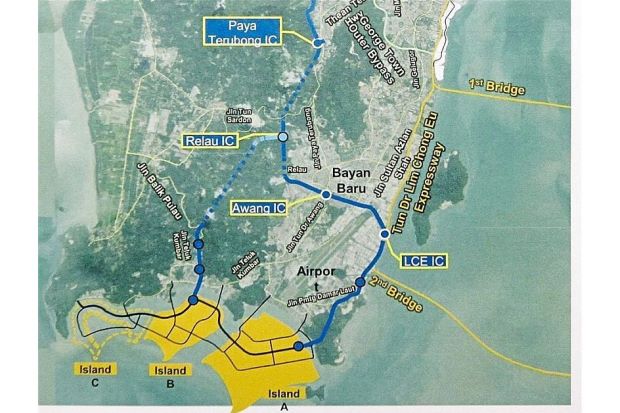
Just so you guys know, land reclamation is VERY common. Besides Penang, Malacca, Johor and Perak reclaim land as well. Many other countries do it too – in Asia, Europe, Africa and America – one example is Singapore, coz obviously the tiny country needs more land. And guess what, Singapore uses marine clay like us! The countries with the most reclaimed land are China at no.1 with 4,600 square miles reclaimed, the Netherlands with 2,700 sqm and South Korea with 600 sqm.
Oftentimes, countries do it for the same reason – they need space. So if Penang really needs space, where else can it get land? Would Kedah or Perak willingly give them land? If no choice, then terpaksa jugak. As Datuk Dr Goh Ban Lee, an urban planner, who is also a Penangite himself explained, land reclamation is the default future of all successful island economies.
- 2.4KShares
- Facebook2.3K
- Twitter11
- Email10
- WhatsApp36


